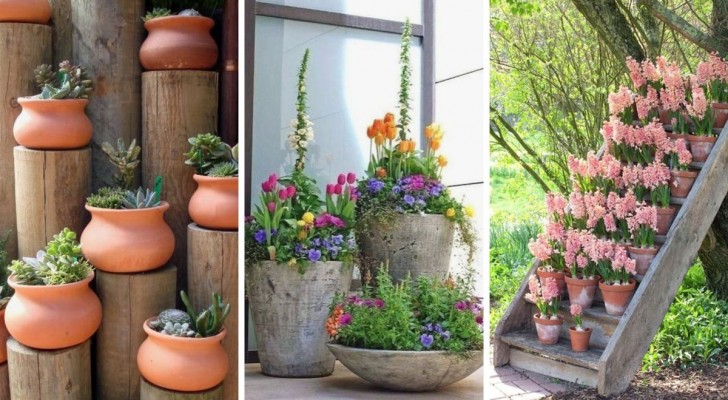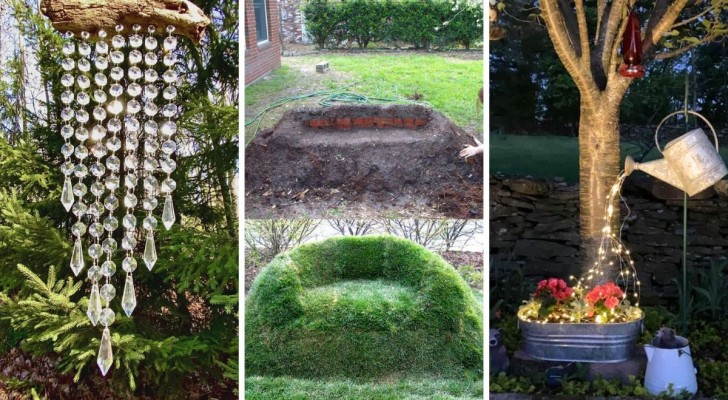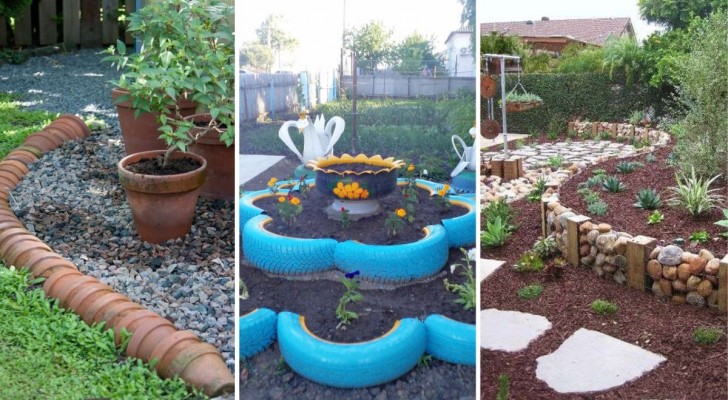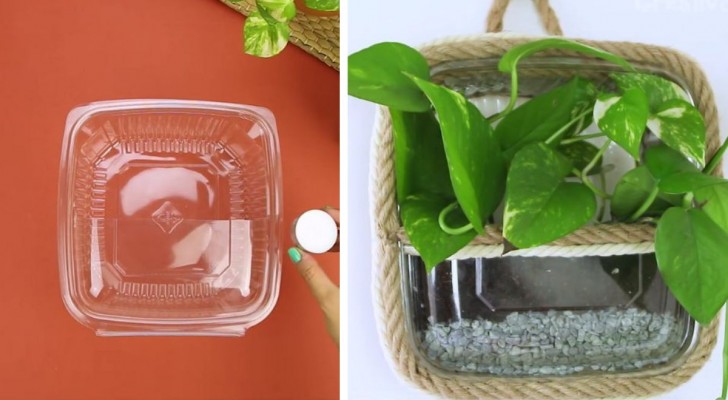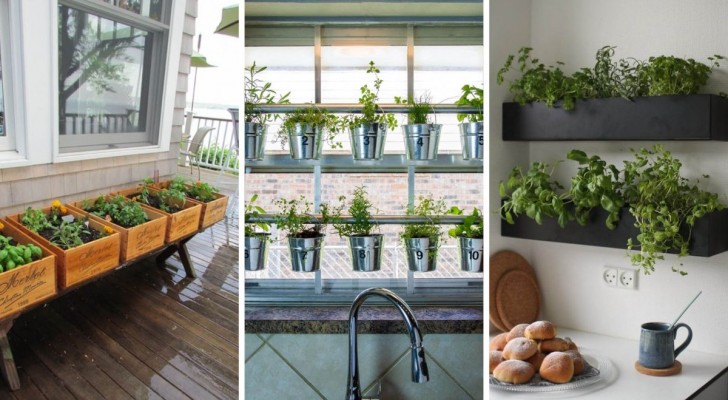Find out how to use garlic and other natural ingredients against insects and aphids at home or in the garden
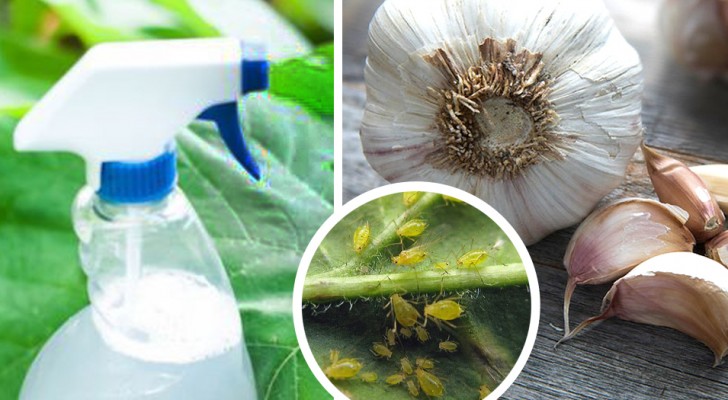
Very often we notice that on the stems or leaves of our plants at home there are various kinds of insects: they can be aphids or scale insects, and they are harmful to plant health.
Whether it is the ornamental plants on the balcony or in the garden or the tasty fruits and vegetables from the garden, it therefore becomes inevitable to have to periodically administer some type of medicine or repellent.
There are many specific products on the market for the various types of parasites that must be eliminated, but when the problem has not reached such dimensions as to require aggressive and large-scale treatments, natural but effective remedies can be tried.
For example, an excellent ingredient to create an organic repellent is garlic, one of the most powerful and least harmful natural insecticides for plants; Different types of spices are also useful, the strong smell of which helps to keep away many unwanted guests. Discover below various methods with which to easily prepare sprays at home to remove harmful insects from plants without compromising their health.
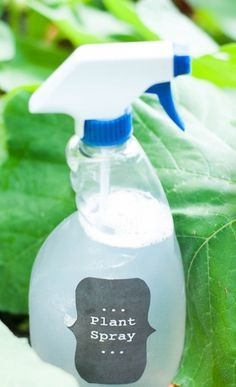
homemadeforelle.com / Pinterest
With garlic and onions
Not only in the kitchen, but also in the care of the green you can use these ingredients that are very easy to find and very cheap. It is necessary to use bulbs that are as fresh as possible, therefore not those that have been in the pantry for a long time that have lost many of their liquids, so that the concentration of useful substances for the repellent is higher.
The sulfur compounds present in these two ingredients, in fact, are able to keep insects at bay. You can choose to use them alone, absolute, or together with water.
- Blend garlic and onion together, creating a cream that can then be diluted with water in a spray bottle. Mix and shake well before use and spray on the points of the plant where you notice the presence of unwanted animals, and also on the ground around the collar.
- You can also use garlic and onion powder, sprinkling them on the ground, but it is always better to dilute them in water, thus preparing a sort of tea to be easily sprinkled where needed.
You can also decide to use the garlic alone: you will need 6 cloves for 3 litres of water in the case of lighter treatments, or two whole bulbs for half a liter of water for a more concentrated treatment. In both cases, the procedure to follow is the same:
- Mash the garlic and put it in a large bowl
- Pour the boiling water into the bowl until it is covered
- Let it sit overnight
- Filter everything through a colander and then use the liquid to fill a spray bottle
This will also be sprayed on the collar of plants (including vegetables) or where you see many insects.
The other ingredients that can help:
- Chilli: You can add it to your DIY spray repellents. The capsaicin contained in the seeds of the chili pepper as well as in its pulp, that is the one that gives the spicy flavor, is an excellent ally in repelling insects. However, it does not damage the plants or alter the flavor of the vegetables on which it is sprayed (but remember to wash them well when you pick them to consume them). A teaspoon of ground or crushed chili pepper is enough.
- Pure Marseille soap, or yellow soap: if you have pure Marseille soap, that is the one entirely of vegetable origin, free of any type of chemical additive or perfume, you can add some flakes to dissolve in the spray. Similarly, you can use grandma's yellow soap (soft potassium soap), always if it is 100% natural. The addition of these products will leave a slight oily residue on the leaves, which however does not harm the plant, managing instead to keep insects away.
- White alcohol at 70° or 90°: if you decide to use it, you will have to use the alcohol and the garlic mixture in equal parts. Garlic will help extract the properties of garlic or onion.
Whenever you use garlic products, be careful that they do not come into contact with your skin or with pets, as they can cause annoying skin irritation. It is also good to protect the eyes and mucous membranes.
Garlic, cloves and cinnamon
Another product that you can prepare at home against plant parasites involves the use of:
- 1 head of garlic
- 10 cloves
- 1 cinnamon stick (alternatively 3 tablespoons ground cinnamon)
- 2 litres of water
- a jar with a lid
- 1 spray bottle or nebulizer
To prepare it you simply have to:
- Peel the garlic carefully and then put it in a mixer or blender along with the cloves and cinnamon, adding only 1 liter of water.
- Run the mixer until you get a homogeneous liquid, without too many pieces
- Keep the liquid in a closed jar for 24 hours.
- After the necessary time, add the other liter of water. If you don't have room in the jar, move everything to a larger bowl or pitcher, and mix well. At this point your product is ready to use in the nebulizer / spray bottle. You can keep what is left over in the jar, but only for a few days.
How to administer it on plants: spray the product where you see the insects. It can also end up on top of leaves or fruits, although it is preferable to spray it more generously on the ground around the collar, and a little more lightly on the rest of the plant.
The recommended time to administer it is in the cool hours of the day, so when it's hot remember to take care of it in the morning or evening. In cooler periods, however, the rest of the day can be fine too, the important thing is that it is not when the sun's rays hit the plant directly. Wait a day before applying any further dose, in case the problem is not solved immediately.
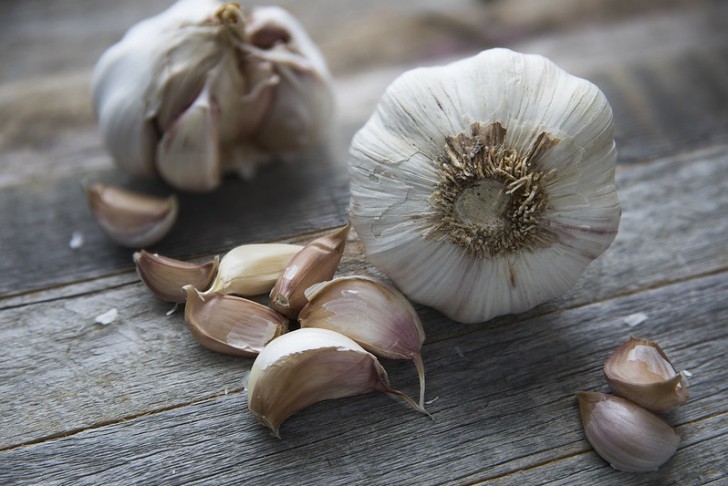
What to do against scale insects
Mealybugs are phytophagous insects, that is parasites of plants that feed on their lymph to the point of causing the deterioration of leaves, flowers and all the apparatus up to the roots. In doing so, they also produce a sticky, sugary substance called honeydew (or honey), which ants are fond of. The latter, therefore, protect the mealybug larvae before they develop the protective shield, which means they also have an infestation of ants.
If the cochineal is still present in a slight way, you can wear gloves and detach it from the branches and leaves of the plant by hand, rubbing it away. However, when the infestation seems too serious, it will need to be pruned, eliminating leaves and branches on which insects are nested. Always inquire about the type of plant on which you intervene, to be sure that it can withstand even a very aggressive pruning, because perhaps it is one that can produce new yields from below. Otherwise try to leave the minimum necessary to give the plant a chance to survive.
In less serious situations you can also use alcohol or neem oil (perhaps after manually removing the cochineal): just rub a cotton swab soaked in these substances in the points infested by the cochineal.
Then there is a completely natural method which consists in buying ladybugs and neuroptera: these insects are natural predators of parasites in the larval stage or just born. They can also be found by doing an online search, there are several retailers of these and other types of insects for a completely organic pest fight.
Organic pesticides: even for scale insects you can use insecticidal soap (soft potassium soap is an example, pure Marseille soap can work), but also d-Limonen. They are effective products and less harmful than many others, but their persistence is limited in time, so it may be necessary to intervene several times, always before the eggs hatch.
In general, products based on azadirachtin, the same substance found in Neem oil, are very effective. These are often easy-to-administer sprays, which you can find in garden centers and landscaping shops. On a positive note, azadirachtin does not harm bees and other beneficial insects. Again, you could turn to horticultural oils, although the most famous, white mineral oil is a derivative of petroleum refining, so not exactly an ecological choice. Alternatively, as a last resort, you can try to use insecticides of botanical origin, derived from plants that contain insecticidal substances, which are less harmful than synthetic ones and are more easily dispersed in the environment.
Happy gardening!
